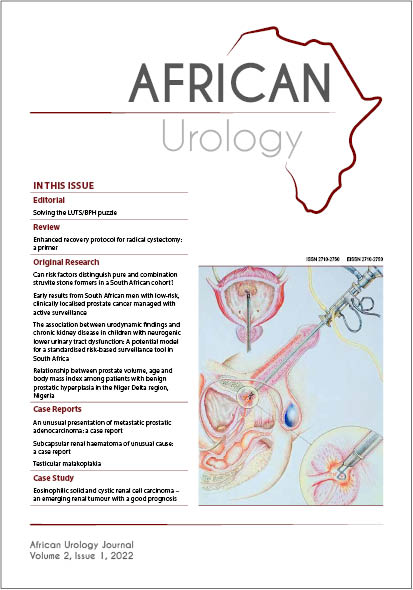Enhanced recovery protocol for radical cystectomy: a primer
Main Article Content
Abstract
A 2014 editorial in European Urology posed the question: “Enhanced recovery after surgery: are we ready, and can we afford not to implement these pathways for patients undergoing radical cystectomy?”1 Until recently, our uro-oncology unit would have had to answer clearly that we were not ready. However, perhaps more tellingly, until recently we were unaware of the cost to our patients of not implementing enhanced recovery after surgery (ERAS).
Our unit is not alone in our sluggish adoption of ERAS,² yet the reasons for this lack of universal uptake are perplexing. What is preventing greater uptake? Is it a theory or implementation problem? Is it our surgical dogma, our belief that we are already doing ERAS, our fear that it may be too much work or concern that it doesn’t work?
Radical cystectomy (RC) arguably represents the most morbid operation that urological surgeons undertake. Despite the introduction of minimal access surgical options and improved perioperative care, we remain aware, in our unit, that outcomes fall short of where they could be. Internationally, morbidity is quoted as ranging from 30–64% and mortality from 1–8% even in high-volume centres.¹ RC patients are typically elderly, comorbid and in our unit, often locally advanced at the time of presentation.
In this paper, we will attempt to answer the questions: What exactly is ERAS? What is the evidence for ERAS? Lastly, we’ll define the three key pre-, intra-, and postoperative elements of ERAS.
